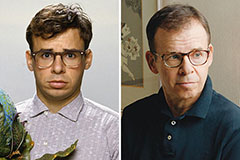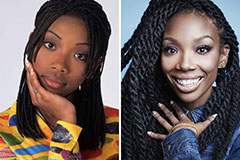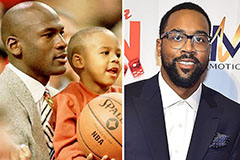Ingenious Solutions in Assistive Technology for Visual Disability
The landscape of assistive technology for aesthetic problems is evolving quickly, offering an array of innovative solutions that enhance access and independence. From advanced smart device applications that assist in navigating to wearable tools made for real-time support, these devices are reshaping the experiences of those with visual problems. Additionally, the combination of smart home innovations and instructional resources has the prospective to foster better community interaction. The effects of these advancements elevate vital questions concerning their availability and effectiveness in varied contexts, calling for a more detailed assessment of their wider impact.
Improvements in Smartphone Applications
In the last few years, advancements in mobile phone applications have substantially transformed the landscape of assistive technology for people with visual problems. These applications utilize the effective sensing units and abilities of modern-day mobile phones to supply customers with devices that improve freedom and availability in their day-to-days live.
Notable among these technologies are applications designed for things recognition, which utilize the smartphone's cam to determine items and offer spoken summaries. Such attributes equip customers to navigate their atmospheres better, whether identifying items in shops or situating individual belongings in your home. Furthermore, text-to-speech applications have improved drastically, making it possible for individuals to record published text through their device's video camera and receive immediate audio responses, therefore assisting in reading and comprehension.
Navigation applications tailored for visually impaired customers have also arised, supplying acoustic advice and detailed area details. These tools give essential assistance for wheelchair, enabling customers to go across unknown rooms with self-confidence. In addition, community-driven applications have actually promoted social communication and source sharing amongst people with aesthetic impairments, producing a supportive network that boosts their high quality of life. Generally, smartphone applications have actually ended up being vital allies in advertising autonomy and ease of access for individuals with aesthetic problems.
Wearable Tools for Navigation
Wearable devices for navigating have actually emerged as a groundbreaking remedy for individuals with aesthetic impairments, providing hands-free support that enhances wheelchair and positioning. These tools typically use innovative innovations, including GPS, ultrasonic sensing units, and expert system, to provide real-time comments and instructions to individuals as they navigate their atmosphere.
One significant example of wearable navigation modern technology is smart glasses, which can find obstacles and relay auditory or haptic comments to the wearer, permitting reliable and secure activity in various setups. Other gadgets, such as belts and vests equipped with sensors, can in a similar way inform users of their surroundings by providing signals concerning close-by items or adjustments in surface.
Additionally, many wearable gadgets integrate with mobile phone applications, allowing customers to personalize their navigation preferences and obtain customized path pointers. This personalization can considerably enhance the customer experience, equipping individuals to take a trip with greater self-confidence and freedom.
As technology remains to create, the possibility for wearable navigating gadgets to enhance the lifestyle for people with visual disabilities remains significant, paving the way for more comprehensive and accessible atmospheres.
Smart Home Innovation Assimilation

In addition, wise home appliances outfitted with tactile interfaces or auditory responses supply intuitive interactions that cater especially to the demands of those with aesthetic disabilities. Clever fridges can announce their materials and expiration dates, while clever ovens can direct users with the food preparation process with audio guidelines.
Home automation systems, such as clever buzzers and safety and security cameras, provide comfort by allowing users to get alerts and accessibility live feeds through their smart phones, boosting individual security (AI-powered visual aids). Additionally, assimilation with tablet computers and smart devices makes certain that users can handle their home environment from anywhere within their facilities
As smart home modern technology remains to develop, it holds the possible to transform the living experiences of people with aesthetic problems, fostering independence and improving top quality of life in an increasingly linked world.

Educational Tools and Resources
Access to effective academic devices and resources is crucial for people with visual impairments, as it encourages them to engage totally in their learning experiences. Numerous assistive innovations have been developed to enhance ease of access and foster independent knowing.
Furthermore, instructional software program specifically developed for aesthetically impaired users provides functions such as high-contrast modes and customizable message dimensions. These devices fit diverse discovering designs and make sure that pupils can tailor their instructional experience to their requirements.
Furthermore, access to audio books and electronic collections broadens the series of available discovering products, allowing trainees to explore topics detailed without the limitations imposed by standard print resources. Joint systems that incorporate ease of access attributes also facilitate team projects, ensuring that visually impaired students can add meaningfully together with their peers.
Neighborhood Assistance and Interaction
A durable network of neighborhood support and engagement is crucial for individuals with aesthetic problems, promoting a comprehensive environment where they can thrive. Neighborhood organizations, neighborhood campaigning for groups, and volunteers play a critical duty in providing resources, details, and companionship, which are important for improving the lifestyle for those impacted by aesthetic problems.
Involvement tasks such as workshops, get-togethers, and assistance teams not just promote ability advancement but also advertise social communication, lowering feelings of seclusion. These initiatives motivate individuals to share experiences, difficulties, and successes, therefore enhancing area bonds. Furthermore, partnerships with local for eyes optometry companies can cause better availability in public rooms, even more integrating people with visual problems into the neighborhood.
Modern technology likewise boosts neighborhood involvement through on the internet systems that offer online support system and sources, allowing individuals to attach no matter geographical obstacles. By utilizing both in-person and electronic options, areas can produce a comprehensive support network. Ultimately, promoting partnership amongst numerous contact lens center stakeholders-- consisting of households, teachers, and healthcare professionals-- ensures that people with aesthetic impairments get the all natural support necessary to navigate day-to-day live properly and with self-respect.
Final Thought
Innovative services in assistive technology for visual impairment dramatically improve the lifestyle for individuals dealing with these difficulties. The integration of mobile phone applications, wearable gadgets, wise home innovation, and academic devices promotes greater self-reliance and access. Additionally, area support and engagement additional encourage aesthetically impaired individuals, promoting inclusivity and involvement in numerous facets of life. Collectively, these innovations not only transform day-to-day experiences however additionally pave the means for a more equitable culture.
The landscape of assistive modern technology for aesthetic disability is progressing quickly, providing a variety of ingenious services that enhance accessibility and independence. Community-driven applications have actually fostered social interaction and resource sharing Read More Here amongst people with visual disabilities, creating a supportive network that boosts their top quality of life. Generally, mobile phone applications have become important allies in promoting freedom and availability for individuals with aesthetic problems.
Lots of individuals with visual disabilities are finding better freedom with the integration of clever home innovation.Cutting-edge options in assistive technology for visual problems considerably boost the high quality of life for individuals encountering these difficulties.
 Rick Moranis Then & Now!
Rick Moranis Then & Now! Brian Bonsall Then & Now!
Brian Bonsall Then & Now! Alisan Porter Then & Now!
Alisan Porter Then & Now! Brandy Then & Now!
Brandy Then & Now! Marcus Jordan Then & Now!
Marcus Jordan Then & Now!